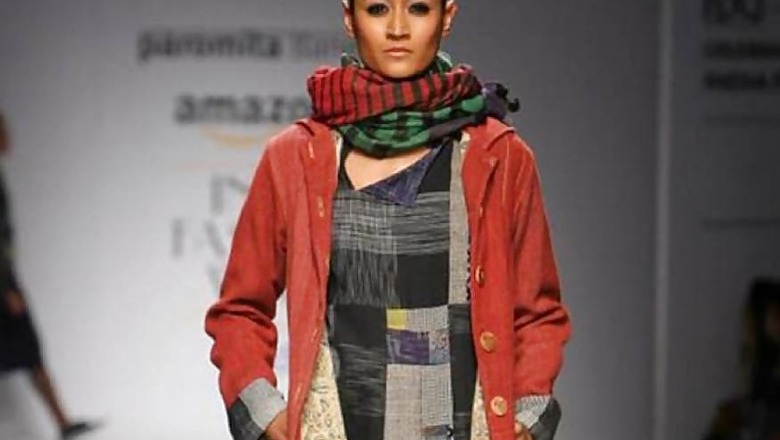
views
Fashion designers work hard to bring out new offerings. They hire several people, keep track of fashion trends and aim at creating something new to attract buyers -- only to see their designs being copied and sold across the country.
"These creatures are completely despicable thick skin rhinos, completely shameless. Unfortunately the way the patenting laws work in country, they are not very favourable. It's long and tedious (fight)," Designer Rohit Bal told IANS talking about his run-in with rip-off artists.
Recently, Rohit Bal took on designer Seema Mehta for one of her creations which he said had resemblance to his Summer/Resort 2016 collection. Bal also targeted Chandni Chowk boutique Asiana Couture for "blatant plagiarism" when he realised the store was selling 'copies' of his work for a while.
The copycats, though, point fingers back at the designers, suggesting their high-priced designs lead to plagiarism. "You tell me one designer who is selling bridal line at Rs 20,000 or Rs 30,000?" said a Chandni Chowk shopkeeper who got over his hesitancy to talk after being assured anonymity.
His justification: "In India, wedding is a big market but the entire population is not born rich to afford wedding lehengas worth lakhs or more. Keeping that gap in mind, we fulfill the dreams of those people who want to look beautiful at an affordable price. What's the harm?"
IANS spoke to a number of people in the market which is one of the hubs for selling cheap replicas of designer wear. Most of them said they were bringing top designs within reach of the common people.
"You please ask the designers to make affordable clothes, keeping low-income people in mind, and I can guarantee you that nobody will come to us for buying cheap replicas. Any market grows when there is a need. After all, it's about demand and supply," said a bridal store owner asserting that copying of such designs was "ethical".
Although copying by small boutiques may anger some designers, there are those who say the problem is deeper. "Plagiarism is an open secret and something every designer has had to deal with," say ace designers Abu Jani who has served the best of Bollywood celebrities, including megastar Amitabh Bachchan and his family.
His contention is that something worse is going on within the fashion industry. "We need to be far more vigilant when it comes to plagiarism within the high fashion industry. If known names can rip off our work, it's only obvious that fly by night operators will," Abu Jani told IANS.
"What is particularly disturbing is the number of 'designers' who copy other designers and don't get called out by either the media or the fashion bodies. Instead, they are celebrated and allowed to ride on the talent and hard work of others," says Jani.
He may have a point there as, earlier this year, textile revivalist Gaurang Shah had accused newcomer Shailesh Singhania of showcasing "exact replicas" of his 2012 creations.
The market for replicas won't vanish any time soon, according to Sandeep Khosla who partners Jani. "There will always be enough people who have no qualms about wearing and carrying fakes".
Khosla says "it's the nature of the beast. Fortunately there will also always be people who want the finest quality and original design and are prepared to pay for that. Couture cannot be affordable. It is a luxury, limited edition product."
About the mass market needs, Khosla says there are plenty of prêt-a-porter labels out there which are stylish, affordable and made by talented designers who cater to such a market.
Designer Suneet Varma, who once blamed designer Aki Narula for copying his designs and using them in the film "Bunty Aur Babli", agreed that "the mass markets all over the world look at high-end fashion for trends to make cheaper versions."
He said there would always be copying of international brands like Prada and Dior. "But that does not mean you can make identical clothes and sell them at a cheaper price. That's not following trends. It's cheating," Verma added.
Designer Wendell Rodricks says he is tired of all the talk around on design violation. It's pointless talking about till "legal issues are bucked up". He and others say design protection laws have to be stronger -- and implemented strictly. Without that, the widespread copying -- in industry and mass market -- would go on unabated.



















Comments
0 comment